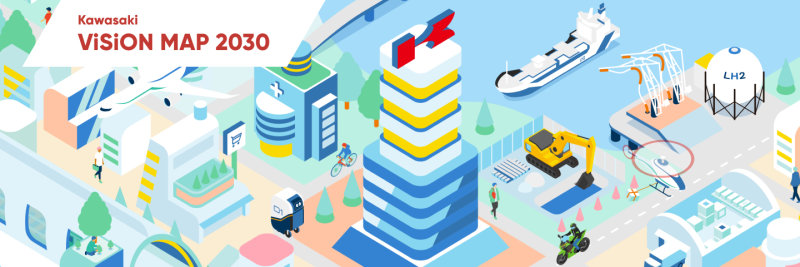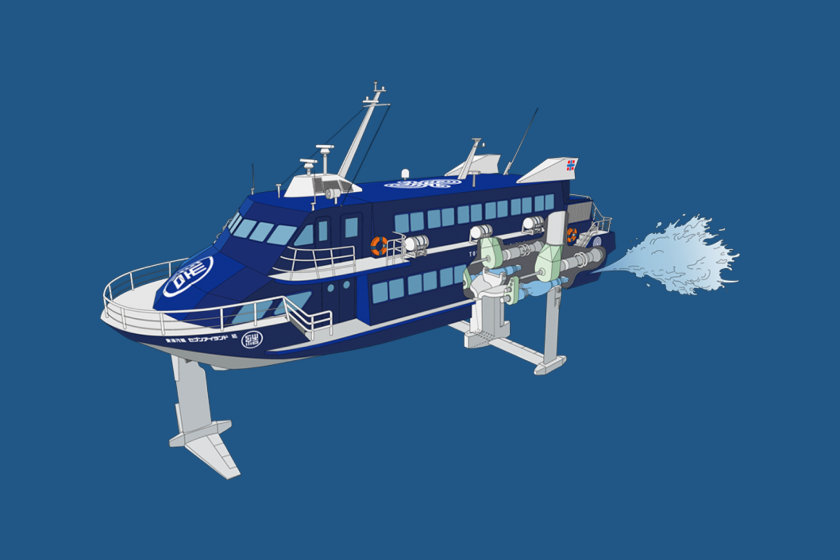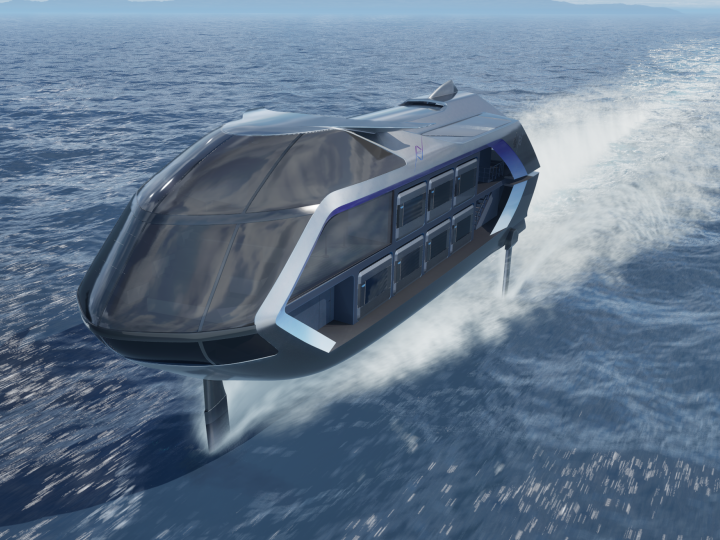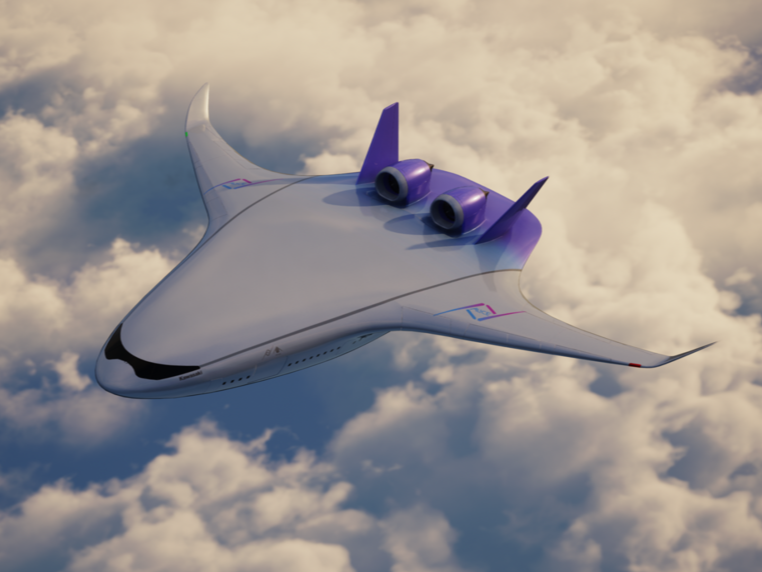Making hydrogen available in everyday life – convenience will solve the energy issue
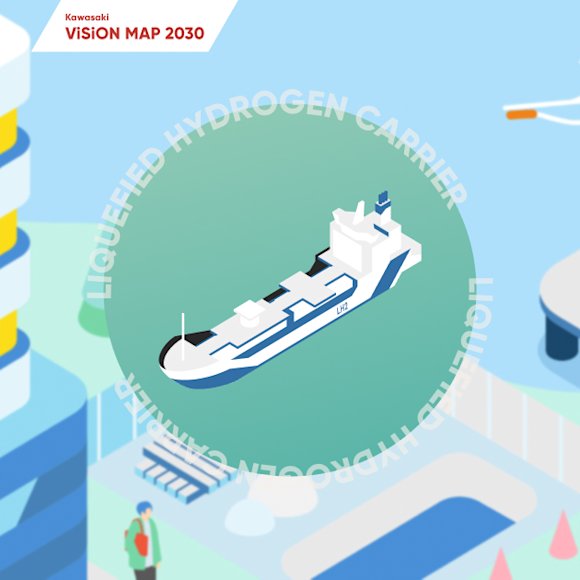
Hydrogen is expected to be the clean energy of the future. In order to make the substance more common in society, Kawasaki is developing large-scale liquefied hydrogen carriers to safely deliver the substance in huge volumes. Here is the voice of an employee taking on “a world first” to transform global energy use. (This article is a part of Kawasaki ViSiON MAP 2030, which imagines the future of the Kawasaki Group.)
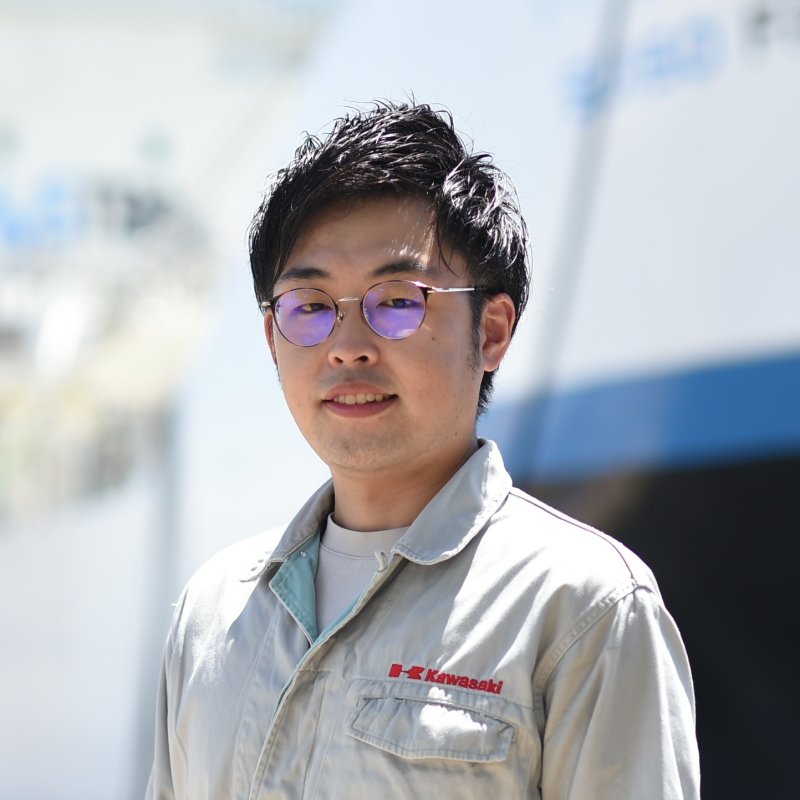
Energy Solution & Marine Engineering Company
Mochida joined Kawasaki in 2016. With his love for fishing, he became interested in fishing boats, eventually developing a curiosity to make them. After designing ship bodies and tanks, his present ambition is to accomplish a first in the business of large-scale liquefied hydrogen carriers.
How can hydrogen become more familiar?
A common goal throughout the Kawasaki Group’s hydrogen business section is to make hydrogen a more available option as next-generation energy. However, the substance is not yet familiar to many people, so this may still be difficult to imagine. One of the examples of ideal hydrogen use conditions is that there are as many hydrogen stations as petrol stations in cities and towns. Another one is availability of hydrogen gas at a comparable cost with natural gas. In order to use hydrogen in everyday life, simply providing it is not enough. Hydrogen needs to be affordable and easy to use.
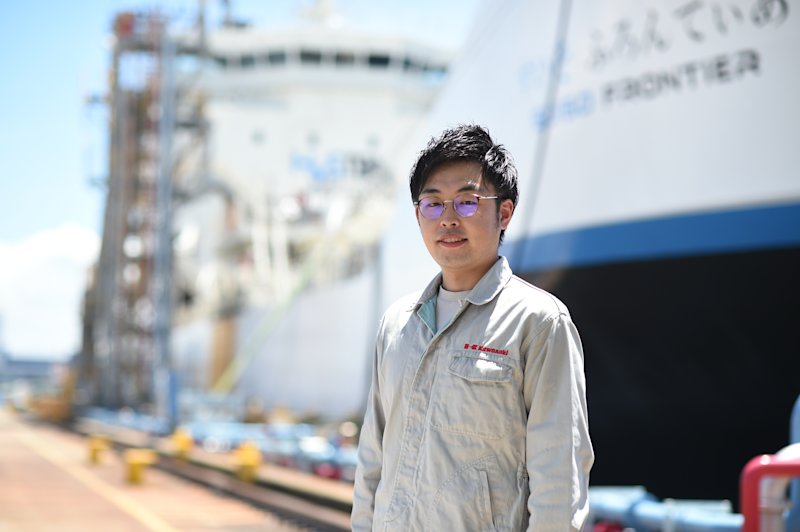
The large-scale liquefied hydrogen carrier will transport this next-generation energy
What should be done to make hydrogen more familiar and convenient? Production, transportation, storage, and utilization of hydrogen all need to be conducted safely on a large-scale to lower the price. In particular, sophisticated technology is required to control a large volume of high-purity hydrogen in the liquid state.
This is where large-scale liquefied hydrogen carriers are expected to play an active part. Such vessels are equipped with four large tanks more than 40 meters in diameter to safely deliver the large volumes of liquefied hydrogen. We devised a tank system capable of maintaining temperatures of –253°C to prevent liquefied hydrogen from vaporizing, and simultaneously discussed with the production team how to make novel, ultra-large tanks exceeding 40 meters. This project presents the biggest hurdles I have ever experienced, which I am motivated to overcome. Moreover, it is fun to meet the other members and spend time exchanging ideas regardless of job title and role.
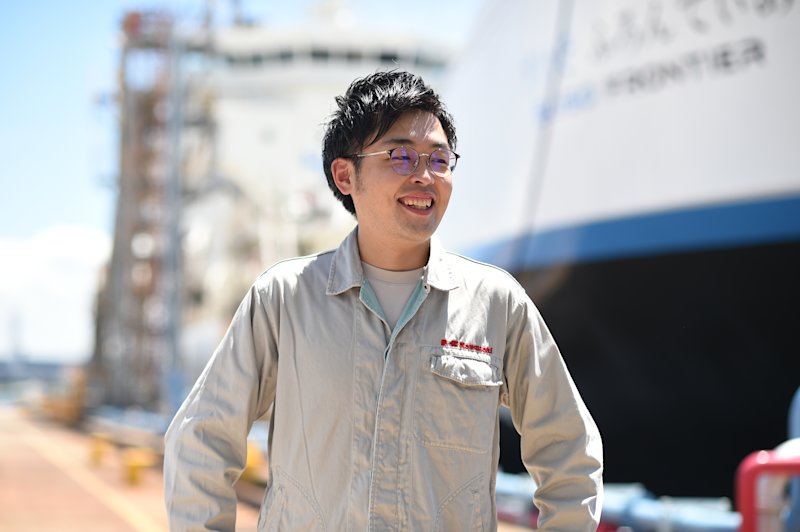
This world first can change our lives
Kawasaki has already succeeded in the Japan-Australia hydrogen supply chain using the liquefied hydrogen carrier Suiso Frontier, and now aims for the success of the first unit of larger vessels capable of transporting more than 100 times the volume of the carrier. When we succeed in its production, it will be the first in the world and a pioneer in global energy use. Needless to say, the plan is that the birth of the first ship will be followed by the second, the third, and so on with a gradual evolution that includes cost optimization rather than identical features. The present time is the exact tipping point from the conventional culture of energy to a decarbonized society. The world is changing so that the energy used in the future in our daily lives will come entirely from such clean sources as hydrogen. I hope these ships will be responsible for the transport of energy and lead the coming times.

The information contained in the article is current as of December 2022.
"Kawasaki ViSiON MAP 2030" presents the future we want to realize by the year 2030, presented through the voices of Kawasaki staff working towards our vision. We hope you join us to learn about their efforts in social change, and to imagine the future we can achieve together.
